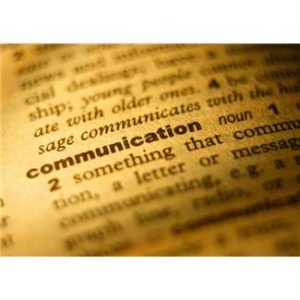A little while back, I asked a number of content strategists to share their tips on what makes a great content writer. They shared a lot of great insights, but they tended to fall more on the ideological side of things, citing curiosity and creativity as top attributes of the writers they worked with.
For anyone interested in succeeding as a content writer, those are hugely important traits to have, but there are also some specific steps and skills related to the technical process of content writing that those of us who have been at it a while learn over time.
For those of you who could use more specific, in-the-weeds tips on improving your content writing skills, these are the top suggestions I offer.
1. Read (a lot).
This is a good tip for anyone who wants to be better at any type of writing. Don’t necessarily stick with
reading the type of writing you’re doing – just be a prolific reader all around. Fiction, non-fiction, magazine articles, blog posts – it’s more important that you read anything you can find that’s by good writers who use language well than it is that you read things that are in the format you’ll be writing in.
Spending time with the work of great writers is how you learn what kinds of words and sentence structures work well together, and what kind of language and writing styles feel awkward, haughty, or needlessly obtuse. Gaining a clearer picture of what you like to read will help you shape your own voice as a writer and replicate what works so well when other writers do it.
2. Do the research.
You can’t write about something you don’t know about. Well, you can, but it will be needlessly difficult and come out sounding like BS (cause that’s what it will be). The first step to every writing project (unless it’s on a subject you already know inside and out) has to be spending time on research.
I spend more time on research than I do on writing. Unless I don’t do enough research, then the writing is like extracting teeth – slow and painful. And the results won’t end up any better for the extra trouble that goes into it.
3. Actively work to empathize with your target audience.
Empathy requires work. It seems simple to say that different people see the world differently, but in practice it feels unnatural to us. The golden rule we’re taught as kids is flawed because how I want to be treated isn’t always how other people do. My interests aren’t always the same as my audience’s. My values aren’t necessarily the same as theirs. Etc. Etc.
That means understanding your audience –getting inside their head to figure out what they’re thinking and the kind of topics and writing they respond to – is an extra step that quality content writers have to make and a skillset in and of itself.
One of the greatest gifts I can come across in my research as a freelance content writer is a blog post with members of my target audience offering up their opinions in the comments, or a LinkedIn group where the people I’m writing for are active participants in the discussions. Or even better, a conversation with someone that’s in my target audience. The more you understand about your target audience – their wants, needs, concerns, values, interests – the easier it will be attain the level of empathy needed to write effectively for them.
Quick side note: this is something else that reading helps with. Learning about other people’s lives through nonfiction or getting inside the heads of characters different from you in fiction is a practice in empathy. The more reading you do, the more you stretch the empathy muscle you need to flex when it’s time to get inside the head of your target audience. (I’m not alone in thinking this – no less than POTUS himself agrees!)
4. Pay attention to formatting.
You have to understand how people read and how their reading habits change on different devices and in different contexts. You’ll find a lot of variety in the particular preferences different people have when it comes to content consumption (some people vastly prefer short-form content, others are much more likely to take the time for quality long form; some are more likely to click on a video, others will opt for text every time).
This makes things complicated, but there are certain online reading preferences that are widespread enough to count on:
- Headlines must be enticing. If no one ever clicks, they’ll never read anything you write. There are too many tips and opinions on what makes a good headline to get into here – but rest assured it’s important and worth spending time on.
- People skim. Either to find the information they need faster or make sure they’ll like your content before committing to read the whole thing. Using headlines, bullet points, and lists helps make it easier for them to consume your content the way they want.
- Visuals matter. I don’t just mean including images in your content (which is good form), but the layout of your content and how easy it is to read is important. You don’t want your writing to look cluttered on the page, leave plenty of whitespace so your words are easier to take in.
Start paying attention to the formatting on the blogs and other online publications you like best. If they’re popular sites, you can bet they’ve paid careful attention to what people respond to and are putting thought into how best to format every post according to reader preferences.
5. Write at your best time of day.
When I try to write at 4 pm it’s soooooo tedious and slow and the work ends up needing more clean up in the proofreading phase. That’s because by late in the afternoon, I’ve usually used up a lot of my brain energy for the day. Writing requires a lot of focus and energy. Even if conventional wisdom says we have eight hours of work in us every day, few people could pull off eight productive hours of writing five days a week – it just takes too much out of you.
You want to figure out how to structure your day so that the work that requires the most energy falls into the hours of the day when you’re usually the most productive. It won’t always work out perfectly (I do still find myself having to do writing at 4pm some days), but at least having an idea of what those best writing hours are so you can plan as best you can will pay off.
6. Track how you work.
This relates to #5, you want to understand your process and habits inside and out. Paying attention to how you do things is the first step to figuring out what works best and how to structure your work productively. Here are a couple of examples of how this has paid off for me:
- Outlining – I used to poo-poo all the advice that insisted that outlining was crucial to writing. It
 was something I rarely did for the first year I worked as a professional content writer and my work was fine without it. But I realized over time that it made the work easier and better. By starting to create outlines for every piece I write in advance, my productivity and the organization of my content pieces has definitely improved.
was something I rarely did for the first year I worked as a professional content writer and my work was fine without it. But I realized over time that it made the work easier and better. By starting to create outlines for every piece I write in advance, my productivity and the organization of my content pieces has definitely improved. - Understanding where my time goes – I mentioned earlier that a lot of the time I spend on a piece goes to the research part of the process, and if I every try to spend less time researching, I spend more time writing. Tracking my time helps me make sure I don’t overload my days and that I do my work in the most efficient way possible (e.g. don’t try to jump to the writing before adequate research has been performed).
- Carbs – This one’s personal, but I’ve noticed that whenever I have carbs for breakfast or lunch, I spend a chunk of the day drowsy and unproductive. How much I get done and how good it is has a direct relation to what I eat. So carbs are now for dinner and weekends only.
7. Proofread (at least twice)!
It’s last on the list, but oh so important. You have no idea how many embarrassing errors or just awkwardly written sentences I’ve caught when proofreading. You never want to send that on to a client or publish it for the world to see. Ideally, someone else should also be reviewing your work before it gets published, but even so, read it at least twice before passing it along. Make one of those readings out loud – you get a better feel for how well your sentences work when you hear how they sound.
I can tell when I read something that hasn’t been proofread (or adequately proofread). You probably can too. It will make you look bad if you let a lot of sloppy errors or bad writing through. This is one of the most important tips I can provide to make sure you avoid that.
These are my experiences and I expect that most other professional content writers would agree with this list (with maybe a few things to add). Most people have the capacity to become better writers. Reading a lot and getting feedback on your writing will inevitably lead to growth in your skill. If being a better writer isn’t really a goal you have (not everyone needs to write well in their work), you can always hire someone to help.



